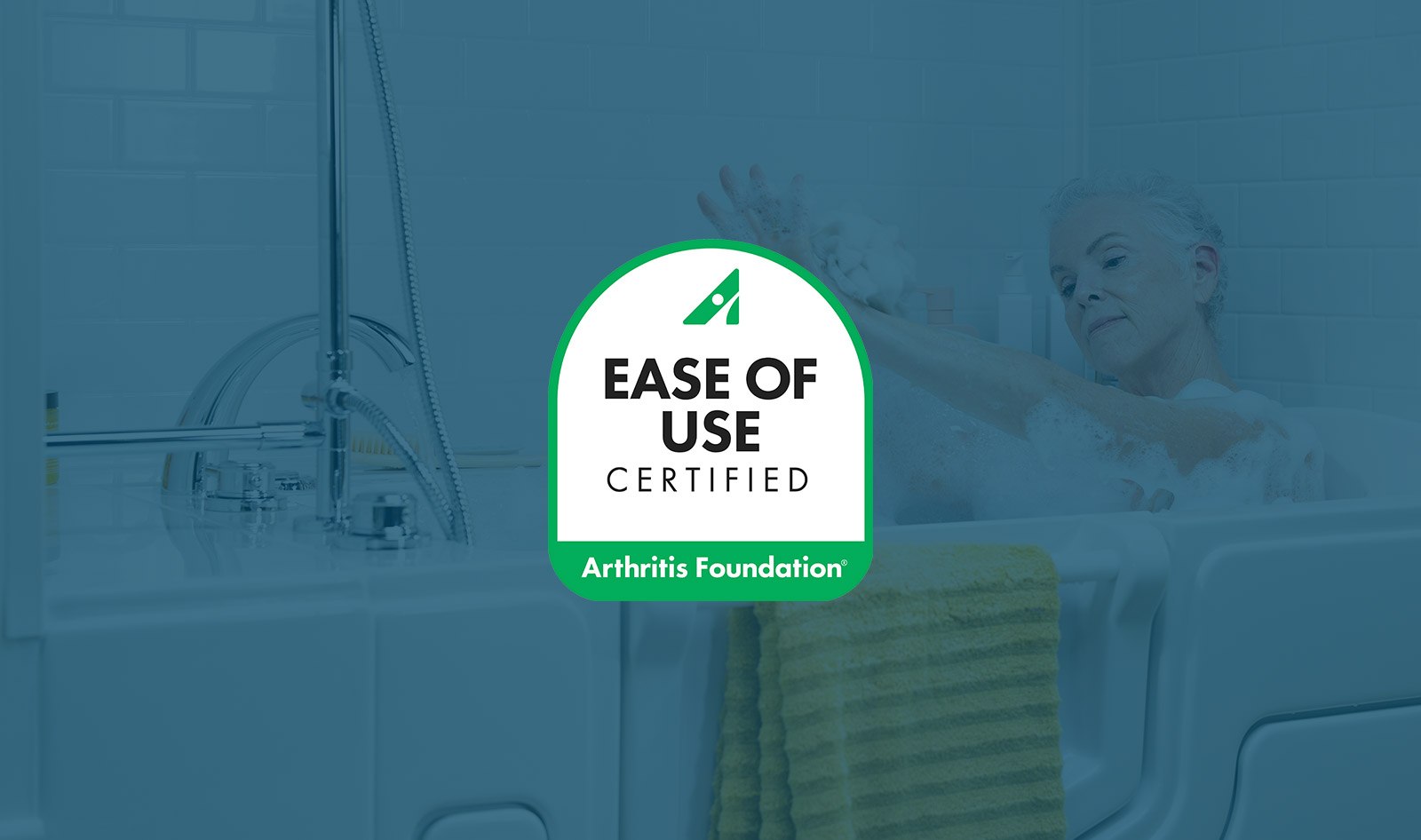Arthritis Management Resource Guide

"*" indicates required fields
What Is Arthritis?
Arthritis isn’t a single disease—it’s an umbrella term for over 100 conditions that cause pain and inflammation in a joint. According to the Arthritis Foundation, it’s the nation’s #1 cause of disability, affecting nearly 60 million adults and hundreds of thousands of children. Learn about the different types, the causes and symptoms and helpful ways you can manage arthritis in this guide.

Are There Different Types of Arthritis?
Yes, there are more than 100 different forms of arthritis and related diseases. Let’s dive into a few.
Osteoarthritis, also known as “wear and tear” arthritis, is the most common type of arthritis. It is a degenerative joint disease that occurs when the cartilage that cushions and protects the ends of your bones wears away over time. The chronic condition affects mostly middle-aged and older adults in their hands, hips and knees.
Rheumatoid Arthritis is an autoimmune disease that causes chronic inflammation in your joints and organs. Your immune system mistakenly attacks your healthy joint tissue, leading to swelling and pain at the site. It usually starts to show up between the ages of 30 and 60, but anyone can develop rheumatoid arthritis.
Psoriatic Arthritis is an inflammatory autoimmune joint disease that mainly affects people with psoriasis, a chronic skin condition. When symptoms flare up, you may notice a “sausage-like” swelling in your fingers and toes, as well as pitted or misshapen fingernails.
Juvenile arthritis is a type of arthritis affecting children under the age of 16. There are many types of juvenile arthritis, the most common being juvenile idiopathic arthritis (JIA), which causes inflammation, stiffness, swelling and pain in one or several joints. JIA is an autoimmune disease and can cause secondary symptoms such as blurry vision and eye inflammation, rashes, fever and fatigue.

What Causes Arthritis?
There are many reasons you may develop arthritis. Some joints naturally wear down as you age and can become swollen after lifelong use. Others may become inflamed due to an autoimmune disease or other health conditions.
Environmental factors and lifestyle choices, such as smoking, obesity or a past joint injury, can also play a role.
What Are the Symptoms of Arthritis?
Arthritis symptoms vary depending on the type and severity of the condition. Common symptoms include:
- Joint pain
- Stiffness or reduced range of motion
- Swelling
- Tenderness
- Skin discoloration
- Grating sensation
- Bone spurs


When to See a Doctor About Symptoms
It’s important to diagnose and treat arthritis as soon as you notice signs in order to prevent long-term joint damage. See your doctor if you experience ongoing, persistent joint pain, stiffness, reduced range of motion and swelling that won’t go away, worsen over time or interfere with daily activities.
Sudden weight loss, fever and fatigue accompanied by joint pain can also be a sign of inflammatory conditions such as rheumatoid arthritis.
How Do Doctors Test for Arthritis?
Depending on your symptoms and medical history, doctors will perform a range of tests to determine if you have arthritis and pinpoint which type.
Tests include a physical exam of your range of motion and joint health, imaging (X-rays, MRIs, ultrasounds) and blood work to spot markers of inflammation.


At What Age Does Arthritis Begin?
Arthritis symptoms start to appear at different times depending on what type you have and what’s causing it. Generally, osteoarthritis shows up in adults over 50, while rheumatoid arthritis tends to start between ages 30 and 60.
Other types that have a clearer cause typically begin closer to that specific trigger.
How to Manage and Treat Arthritis
The primary goal of arthritis treatment is to alleviate symptoms and enhance joint function. You may need to experiment with various treatments or a combination of strategies to identify the most effective approach for your specific needs. These management solutions may involve medication, physical therapy and lifestyle modifications.
According to the Arthritis Foundation, eating anti-inflammatory foods can help alleviate pain, morning stiffness and inflammation while improving overall health. Studies suggest eating a diet rich in antioxidants and omega-3 fatty acids gives your body the support it needs to ease symptoms.
One example is the Mediterranean-style diet—eat leafy greens, fish, nuts and berries, olive oil, seeds and beans, while avoiding highly processed foods, saturated fats and excessive sugar. In general, it’s recommended you make specific dietary modifications depending on your type of arthritis.
Stay active regularly to keep your body limber, reduce stiffness, build muscle and joint flexibility and ease pain over time. Look to low-impact activities like walking, yoga, swimming, tai chi and cycling. Talk with a physical therapist, personal trainer or primary care physician if you have specific questions and concerns.
Always consult with your primary care physician when it comes to medication, as treatment is highly individualized. Common medications that may help alleviate arthritis symptoms include NSAIDs like ibuprofen, OTC anti-inflammatory creams, corticosteroids and DMARDs (disease-modifying antirheumatic drugs) designed to treat inflammatory forms like rheumatoid arthritis.
Alleviate pain, improve mobility and find full-body relaxation with massage therapy, warm baths and hydrotherapy, acupuncture, meditation and deep breathing. Herbal supplements such as turmeric and ginger can also help reduce inflammation, especially in combination with traditional medical treatments, diet and exercise.
Research is ongoing into the connection between weather and joint pain. According to the Arthritis Foundation, weather changes do have a noticeable effect on arthritis symptoms, specifically, elevated humidity and sudden changes or lowering of barometric pressure, which can irritate nerves in joints. Cold temperatures may also increase joint stiffness and discomfort, though evidence is conflicting.
What Home Upgrades Could Help a Person Living With Arthritis?
Managing arthritis at home starts with having a supportive routine and setup in rooms like the bathroom, bedroom and kitchen.
Bathroom
Install grab bars near the toilet and shower for added stability to help reduce the risk of falling. Many people with arthritis benefit from a walk-in tub or shower with a low step-in threshold, among other safety features.
Raised toilet seats and lever-style faucets can also help, requiring less strength and reducing strain.
Bedroom
Keep essentials on your nightstand and dresser in an easy-to-reach, convenient location.
You can also install arthritis-friendly, touch-activated light switches and beds with an adjustable base to minimize discomfort and aid mobility. Adjustable beds also can reduce pressure on joints with the ability to elevate your legs.
Kitchen
Store frequently used kitchen items where they’re easy to access with minimal bending or reaching. Install ergonomic D-shaped cabinet handles in place of traditional knobs for easier gripping and reducing strain.
You can also swap your kitchen tools and utensils for those with cushioned, slip-resistant or built-in grips.
Benefits of a Walk-In Tub for Arthritis
Upgrading your traditional bathtub to a walk-in tub can be life-changing if you or a loved one have arthritis. On days when your symptoms flare up, you can easily step over the low threshold for a secure entry and close the door with minimal effort using the no-strength locking handle.
Additionally, walk-in tubs with air therapy and hydrotherapy jets deliver total-body relief for sore and stiff joints associated with arthritis, while red chromotherapy light helps soothe inflammation and promote healing.

Additional Resources
Find the information you need and deepen your understanding of arthritis care and treatment for yourself or a loved one with these trusted resources.
| Organization | About |
| Arthritis Foundation | The largest nonprofit in the US dedicated to the prevention, management and cure of arthritis. Their website includes scientific research, guides, webinars and videos, a helpline and many other ways to get connected. |
| Versus Arthritis | An online community and resource hub for people living with arthritis, featuring helpful articles, a helpline, chat, local volunteering opportunities and more. Based in the UK. |
| Action ON Arthritis | A CDC-funded educational project focused on improving arthritis public health strategies and awareness. |
| American Physical Therapy Association | Includes helpful guides, courses and research on arthritis detection and management. Some content requires APTA membership to access. |
| American College of Rheumatology | A nonprofit professional association serving physicians, scientists and health professionals across the globe via clinical guidelines, peer-reviewed journals, patient resources, advocacy, meetings, events and much more. |
Safe Step Is Approved by the Arthritis Foundation
Bring ease and comfort to your bathing routine with a Safe Step walk-in tub. Our tubs have earned the Arthritis Foundation’s Ease of Use Certification, which recognizes products that enhance the daily lives of people with arthritis and other physical challenges.
Our tubs have undergone rigorous testing and approval by experts as well as people with moderate-to-severe arthritis, demonstrating that a Safe Step Walk-In Tub is easy to use for everyone. Request your free quote today to see the difference our walk-in tub makes.

